Parking
is free, and we had no trouble finding a spot.
The
outside of the building, with chocolate brown tiles and
gun-metal gray roofs, is not terribly attractive. The
roofs used to be white, which gave it a more 60's modern
appearance, and from a distance, the brown always comes
across like wood shingles. Overall, the exterior colors
do blend nicely with the pieces of art outside.
The
green gardens leading into the main entrance are a pretty
feature. And two more Rodin sculptures stand in front,
both of which are very accessible.
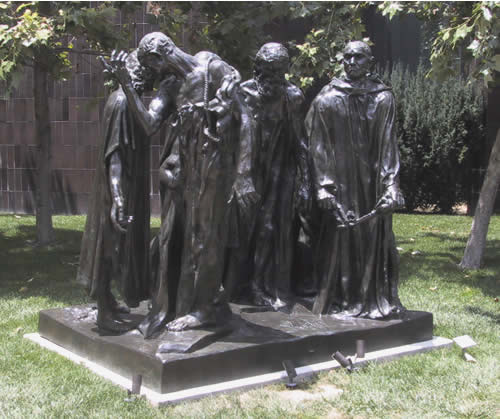
Although
security is abundant, none of the works had any stanchions
or guard rails protecting them. Visitors were standing
next to Balzac, and snapping pictures with The Burghers
of Calais [above] as if they were The Seven
Dwarfs of Fantasyland.
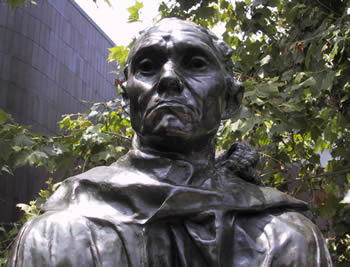
[click
here to see some of the incredible details]
It
was very friendly, gregarious and welcoming. And we hadn't
even walked in the front door.
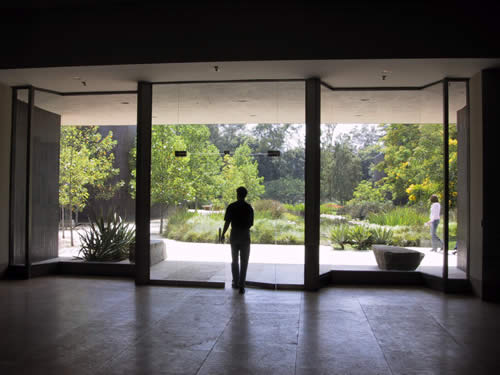
Once
inside, all of the street noise is lost - and we were
met with a hushed quiet -- similar to that of a busy library.
Quiet conversations, echoing footsteps, even some laughter.
Nice.
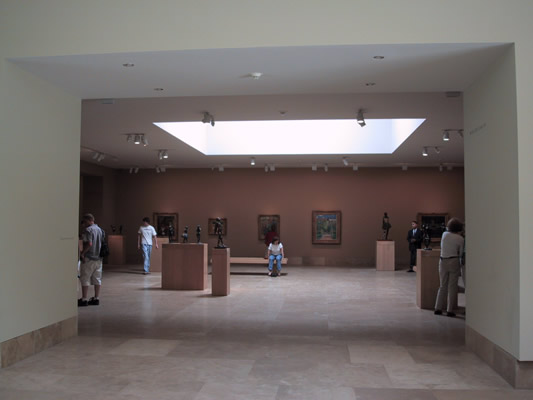
The
interiors are light, bright, open, with lots of filtered
sun pouring in through skylights. And a good crowd was
present, although it never felt congested or closed in.
Admission
Fees
Adults:
$6.00
Seniors [62 and above]: $3.00
Visitors 18 and under: Free
Students with ID: Free
Museum Members: Free
The
museum is essentially in the shape of a letter H - with
the lobby and common area being the cross piece of the
'H.' The galleries radiate out from the common area in
4 different directions, with each 'leg' displaying art
in specific timeframes. Downstairs are a few other large
galleries.
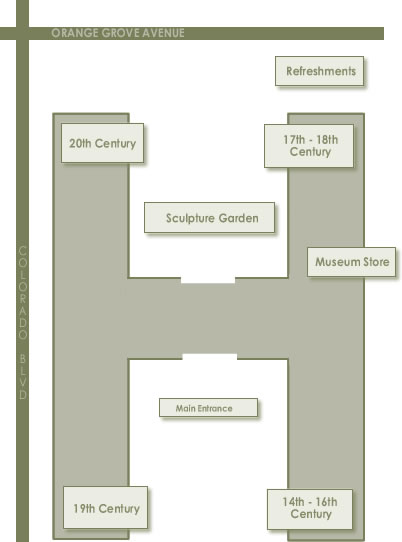
The
first gallery just off the main lobby contains art from
the 19th and 20th Centuries, and it starts off with a
bang. van Gogh over here, Cezanne over there, Degas sculptures
in the center of the room - all of which I would describe
as famous pieces of art. Dianne and I recognized quite
a few of them.
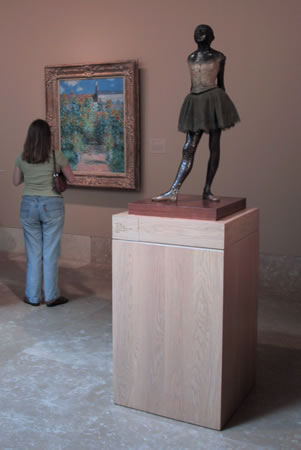 mmm
mmm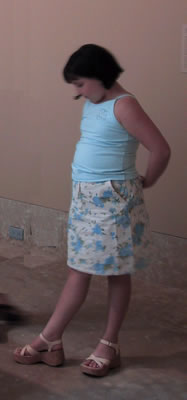
Like
the sculptures in the main entrance garden, the works
here have no glass cases, no 'PLEASE DO NOT TOUCH' signs,
and no laser-guided buzzers. We could have literally reached
out and touched the art. But we didn't. No one did. It
was fascinating.
Contrast
this vibe with The Autry, where a tube top from 'Thelma
and Louise' is displayed behind a thick glass case with
alarm activated guardrails. Go figure.
But
security is present and the staff does a good job. While
certainly approachable and accessible, they walk the fine
line of being friendly, intimidating, and unobtrusive.
Nice work here.
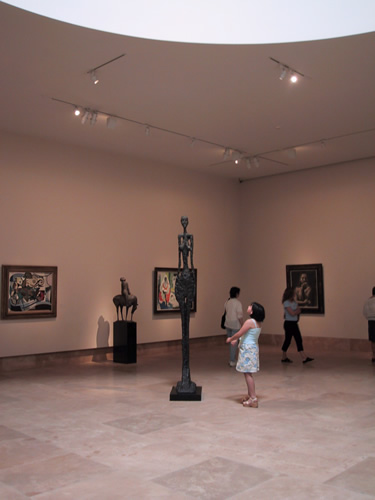
From
this main gallery room, visitors can walk toward the 19th
Century Impressionists and Post-Impressionists in one direction,
or 20th Century paintings and sculpture in the other. We
headed down the 20th Century hallway.
On
both sides were paintings by among others, Modigliani,
Matisse, and Picasso. Sculpture from the likes of Henry
Moore, Giacometti, and Brancusi.
In
more than a few cases I had to peek at the title to remember
the artist, but most of the pieces here were very familiar
- like a really good Art History book.
Again,
the sculptures are in full view with no guard rails or
glass cases. To be able to stand next to Giacometti's
famous Tall Figure sculpture [right] was
a bit like meeting a celebrity. Please note: Tall Figure
did not grant an autograph.
Along
with the central skylights, the additional lighting is
just outstanding. In many cases it's hard to even detect.
Paintings are covered in glass or plexiglass that is so
pristine and clear, and which is so close to the surface
of the picture, in some cases you feel like you can touch
the texture of the oil paints.
Once
to the end of this gallery, Megan noticed a door leading
to the outside gardens. We
took it



